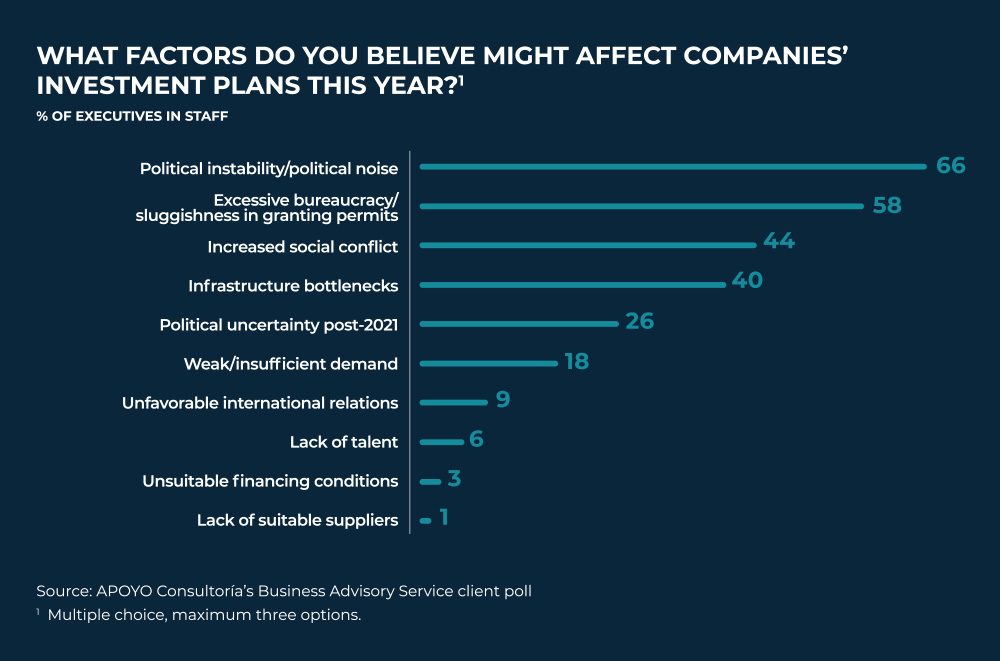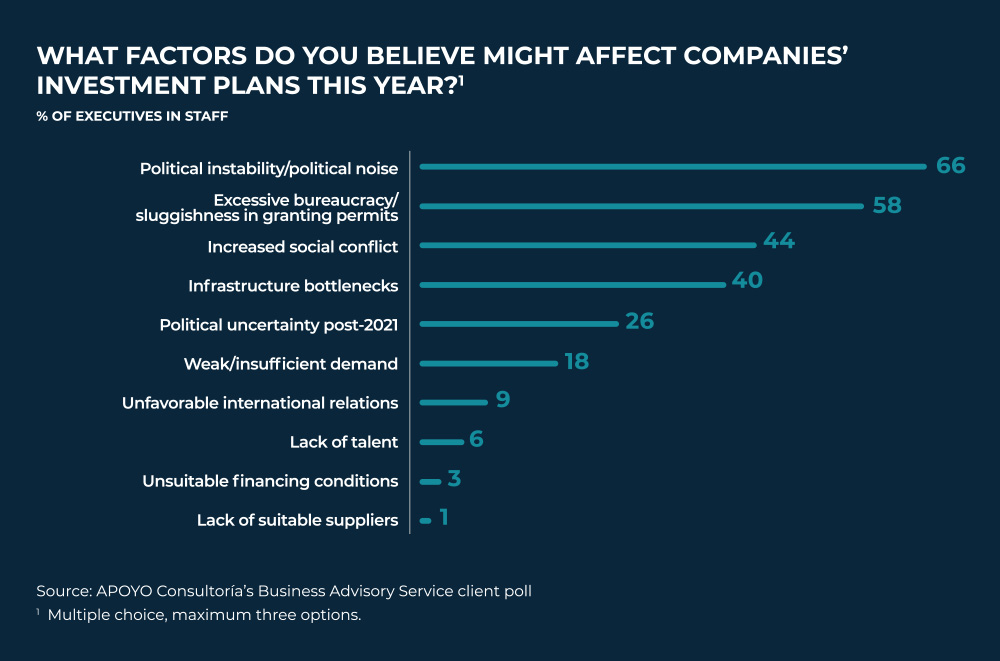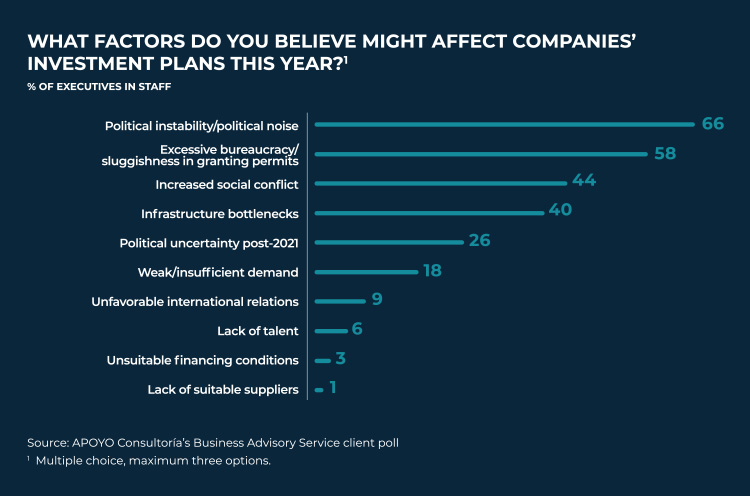In his July 28, 2019, Independence Day address to the National Congress, Peruvian President Martin Vizcarra proposed a constitutional amendment to move general elections from 2021 to 2020. He did this with the specific goal of ending Peru’s government functionality crisis, brought on by constant disagreement between the executive and legislative powers. This announcement has left Peru’s government in an increasingly volatile state replete with uncertainty, paralyzing legislation and adversely affecting business expectations. The truth is that this is Peru’s most serious crisis of the last 19 years.
Vizcarra’s five-year term (2016-2021) began with high expectations. Consensus among the private sector was that a highly-skilled executive branch (led by a seasoned technocrat like Pedro Pablo Kuczynski) working alongside a Fujimorism-dominated Congress would create space for sweeping reforms and allow Peru OECD membership. These good economic prospects and high business confidence triggered an investment boom, with investors encouraged by macroeconomic health and an excellent international market for Peru’s raw exports.
Few of these expectations were met. Peru’s political landscape turned volatile and complex, deflating business expectations and discouraging private investment. This environment is what led to Pedro Pablo Kuczynski’s resignation in March 2018 amid intense pressure from Congress. Martin Vizcarra, his vice president, succeeded him.
This uncertain landscape was increasingly worsened by continued investigations into high-profile corruption cases. These investigations involved many traditional and well-known political leaders. Catalyzed by the fight against corruption, serious disagreements between the executive and legislative powers continued, with the former accusing the latter of inequitably favorable treatment of judges handling more serious accusations.
“The relationship between the executive and congressional bodies continued to erode, bringing overall governmental effectiveness and the country’s economy down with it”
Throughout Vizcarra’s first year in power, the relationship between the executive and congressional bodies continued to erode, bringing overall governmental effectiveness and the country’s economy down with it. After a full year, it is no surprise that 75 percent of the population supports an early general election.
After Vizcarra’s proposal was announced, the political environment grew increasingly complex and uncertain. Circumstances change daily, even though President Vizcarra has yet to obtain the necessary support in Congress to pass his proposal. Furthermore, half of his already small group of legislators have resigned, leaving a meager five.
However, it is not only lack of congressional support that is eating away at the president’s power. He is also losing support from regional governments—especially in the south, where social conflicts over mining continue to mount, culminating in strikes and demonstrations against two flagship projects. This political turbulence has brought economic growth to a standstill.
During this same period of economic development, Peru saw the collapse of the party system and frequent corruption cases. Thus, according to APOYO Consultoría in 2019 Peru should experience a growth rate of 2.2 percent. Growth will be driven by a small handful of factors, mainly mining and agriculture, with only marginal progress in key infrastructure projects. The current political situation hinders the country’s overall growth potential significantly.



Political impact on the business landscape
It is vital to clearly map out those channels through which politics affect business decisions, and—most importantly—identify the key channels for each sector. We have identified four main channels through which the political world directly impacts the economic sphere.
The first is political noise and its effect on private investment. This refers to such things as constant confrontations between various government figures. Business confidence does suffer when the political sphere is characterized by so much uncertainty.
The second political risk channel is the enactment of laws which alter the economic sector’s landscape, either from the executive branch or Congress. Regulation can thus be unpredictable and contradictory, leading to heavy costs for businesses. And the current political crisis has increased Peru’s already perilous regulatory risk levels.
The third channel is the slow or inefficient public administration. This sort of situation affects businesses threefold: As users of public services, as suppliers of goods and services and as entities that rely on a healthy macroeconomic environment. In this administration, the effectiveness of public administration has steadily decreased.
This standstill is the result of several factors:
- “Fear of signing” due to ongoing corruption investigations, paralyzing executive decision-making.
- High turnover rate of government officials.
- Recent changes to regional and municipal authorities, positions which were entirely replaced due to the prohibition on consecutive reelection.
These issues have led to constant delays in decision-making, low-budget execution and slow progress on major public projects.
“It is vital to clearly map out those channels through which politics affect business decisions”
Changes in regional and municipal authorities tend to have a high impact on public investment rates. Turnover among these authorities has historically accompanied drops in public investment, so it follows that current changes in Peru’s 1,800 municipalities will see an especially large drop. This is the reason why public investment will decrease by 1.5 percent this year.
The fourth channel through which politics affects the business environment is social conflict, which has intensified significantly in the first half of the year, especially in relation to extractive activity in southern Peru.
This situation is cause for concern for two main reasons. On one hand, the government has tried to resolve these conflicts with inappropriate incentives. Furthermore, some agreements made in negotiations jeopardize the legal safeguards for investments.
In a context in which politics has overtaken headlines and is generating major uncertainty in the business environment, risks must be identified, measured and carefully monitored. This will allow companies to tackle risks to their businesses, understand their scopes and incorporate them into how they manage their reputations and sustainability.
Authors
María José Gallo Gold



